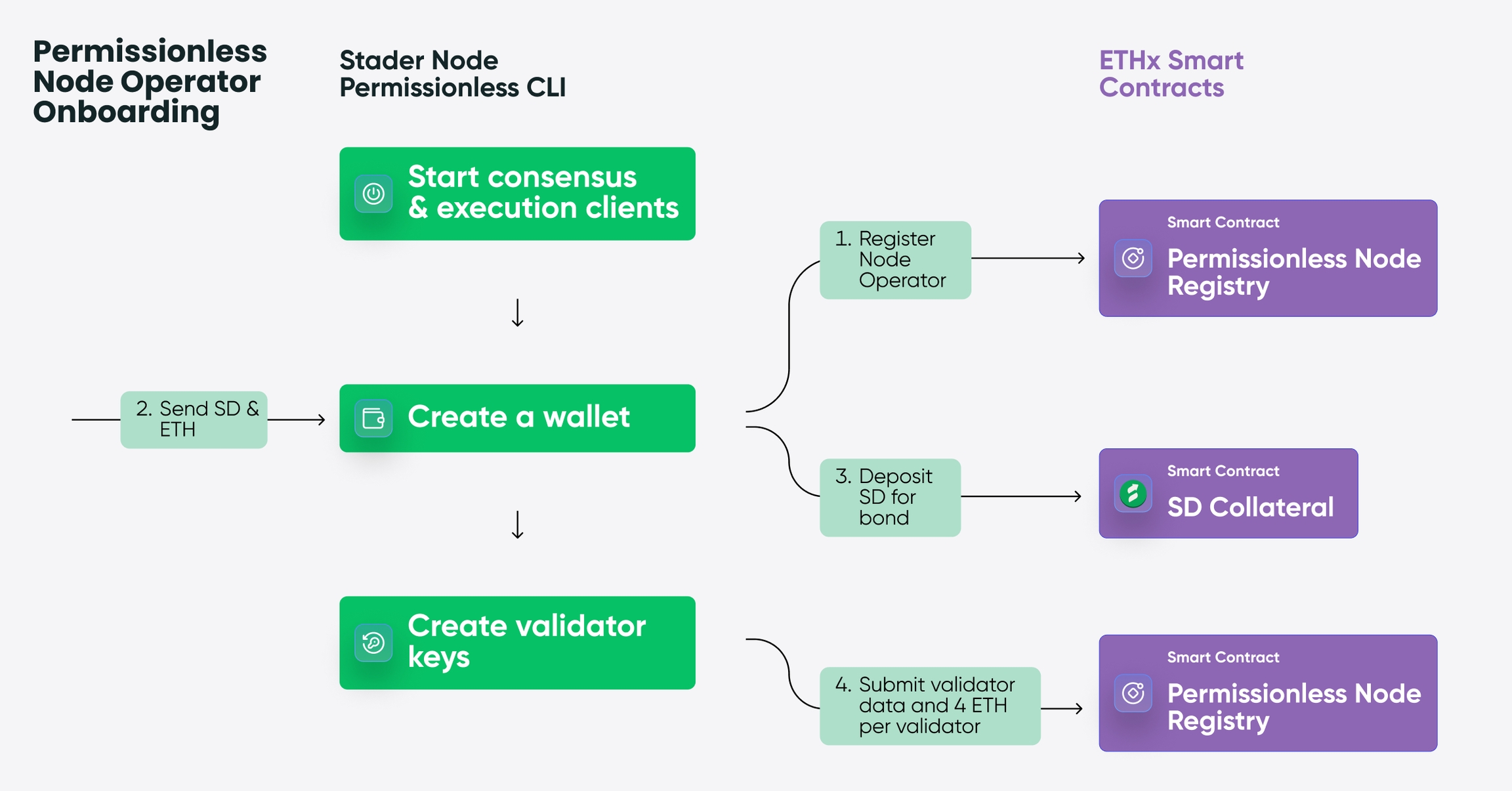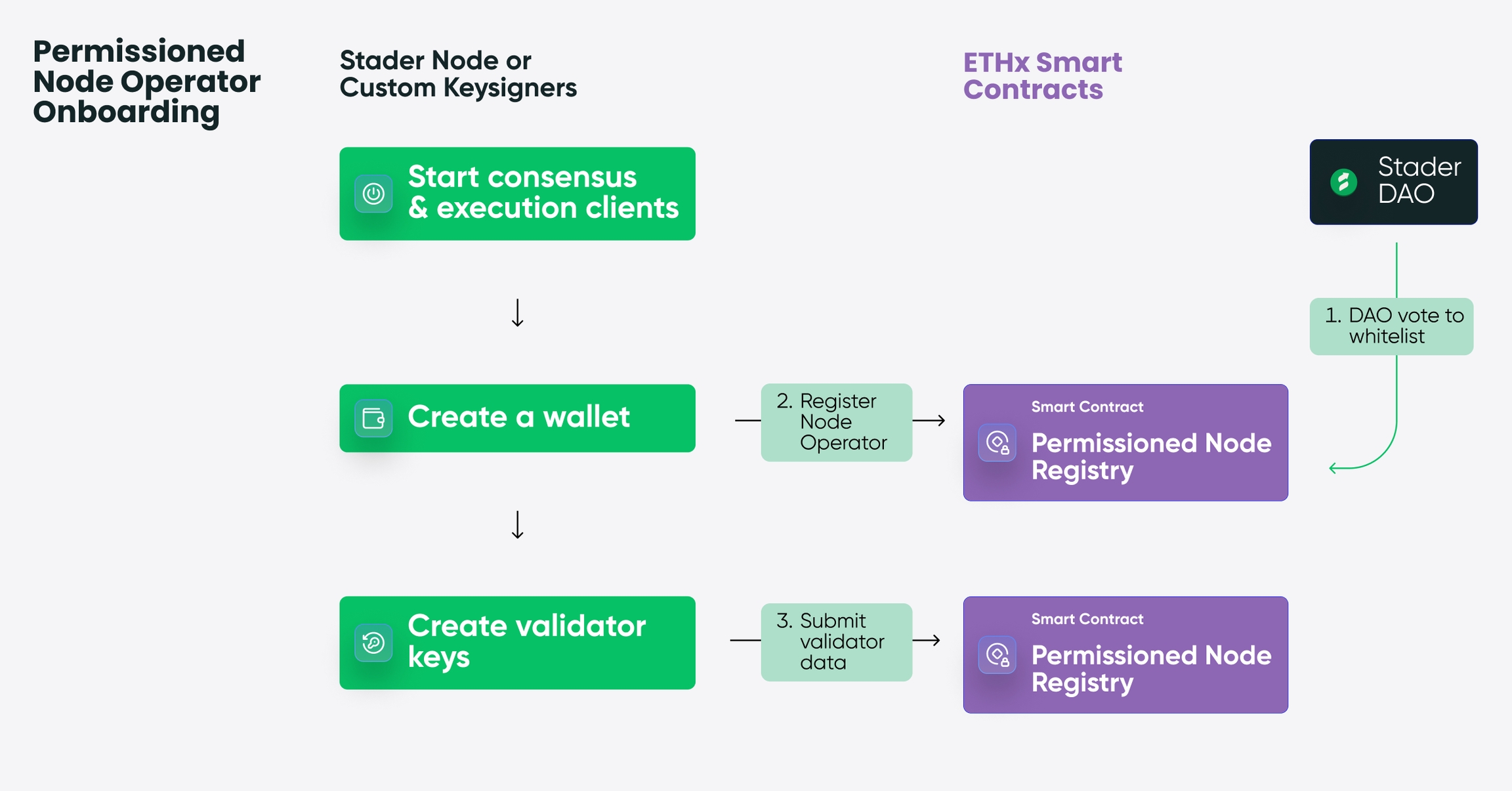Node Operator

Stader ETHx is built to reduce technical and capital barriers to running nodes on Ethereum and empowering smaller node operators is of the highest importance for Stader. Stader’s ETHx permissionless pool lets anyone operate a node with 4.4 ETH of asset collateral [4 ETH + 0.4ETH worth of SD (Stader’s governance token)]. To remain scalable and have the backup capacity, the permissioned pool will onboard a few select operators with a history of running nodes at no collateral. Depending on eligibility, a node operator can be onboarded to the permissionless or permissioned pool.
There are two types of eligibility that a node operator could qualify for:
Permissionless node operator: Deposit 4 ETH and 0.4 ETH worth of Stader governance token (SD) as a security bond for each validator and run one or more validator clients. Qualifying for this criterion enables the node operator to join ETHx’s permissionless pool.
Permissioned node operator: Show qualifications of prior expertise in running Ethereum nodes and pass KYC checks subject to Stader DAO approval. These operators can run validators without needing a security bond. Qualifying for this criterion and a DAO approval enables the node operator to join ETHx’s permissioned pool.
Operators from both pools can leverage the Stader node to interact with ETHx smart contracts and allocate Staker’s ETH to their validators. Here are the two lifecycle flowcharts that explore the sequence of operations involved with onboarding an operator and registering validators. The flows vary, depending on the type or Node Operator.


Last updated